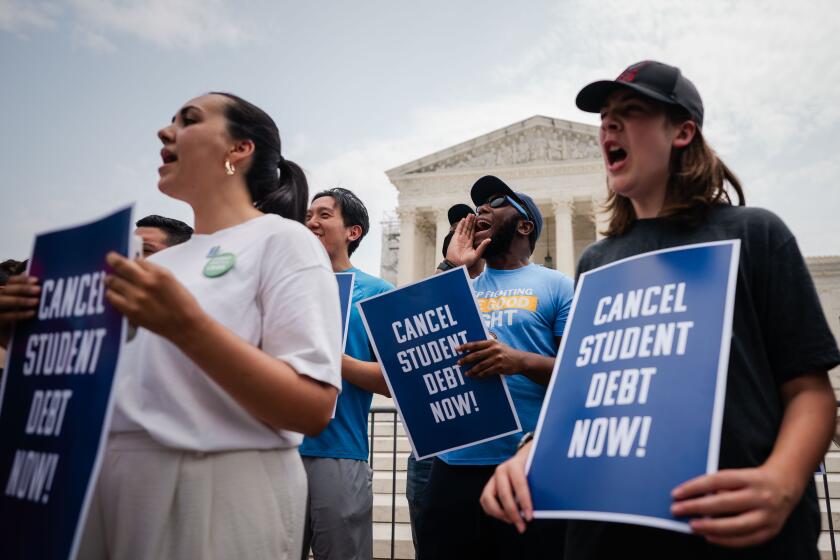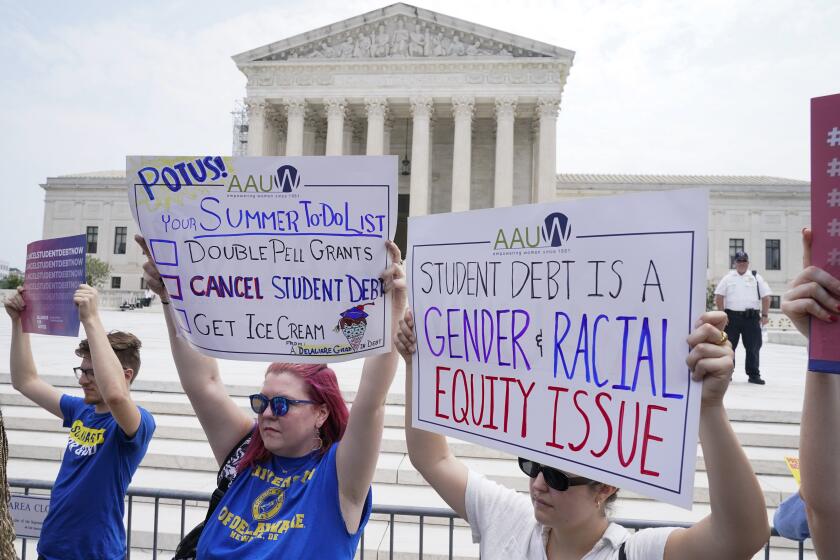Biden canceled billions more dollars in student loans. Here’s what you need to know

The Biden administration announced an additional $9 billion in student debt relief for tens of thousands of borrowers Wednesday, days after federal student loan payments resumed after a three-year pause during the pandemic.
The move gives relief through fixes to income-driven repayment plans and public service loan forgiveness, and by canceling debt for borrowers with total and permanent disabilities, the White House said in a statement.
Here’s what you need to know.
What does it mean?
The measure will forgive some $9 billion in federal student loans to about 125,000 borrowers. The latest round of relief is part of the Biden administration’s changes to federal programs to address bureaucratic obstacles and widespread breakdowns that prevented some borrowers from having debt waived; those and other moves have led to a total of $127 billion in federal relief to nearly 3.6 million Americans, according to a news release by the U.S. Department of Education.
Federal student loan payments resume this month. Here’s how you can locate your account information, get payment details and find repayment plan options available to you.
Do you qualify?
According to a department official, eligibility is based on the number of payments borrowers have made under preexisting programs. Those borrowers include:
- 53,000 borrowers who are eligible for Public Service Loan Forgiveness programs, which applies to those who work in public service jobs such as teachers, police officers and social workers who make monthly payments on their federal loans for 10 years. In remarks Wednesday, President Biden said that because of “red tape,” only 7,000 borrowers had been helped under this program in the 15 years before he took office. The additional debt relief for public service workers totals $5.2 billion.
- Nearly 51,000 borrowers who have made 20 years of payments through income-driven repayment, which is adjusted annually based on income and family size, but never received their entitled relief because of what Biden called “administrative failures.” They will receive $2.8 billion in new debt relief.
- Nearly 22,000 borrowers who have a total or permanent disability. They will have $1.2 billion in loans canceled.
What do you need to do?
Those who qualify under PSLF have already applied, and their discharges will be processed automatically and they will be notified by their loan servicer, a department official said. Those who qualify under income-driven repayment will be notified of their eligibility by their servicer and given a period of 30 days to opt out of the discharge if they choose.
A new, income-based student loan repayment plan launched Tuesday offers more affordable monthly payments to millions of low- and moderate-income borrowers.
How does the measure align with the administration’s overall plan?
In June, the U.S. Supreme Court struck down Biden’s plan to cancel some $400 billion of student loans, ruling that the measure fell outside the president’s authority. But the Biden administration has said it will continue to fight to reduce student debt through existing programs such as Public Service Loan Forgiveness and income-based repayment. Other programs include the new Saving on a Valuable Education plan, or SAVE, a variation on income-based repayment that offers more affordable monthly payments to low- and moderate-income borrowers.
Since the Supreme Court struck down his wider-reaching plan, “snatching from the hands of millions of Americans thousands of dollars in student debt relief that was about to change their lives,” Biden said Wednesday, the administration has been exploring a new approach under the Higher Education Act, which “allows the secretary of Education to compromise, waive or release loans under certain circumstances.”
More to Read
Sign up for Essential California
The most important California stories and recommendations in your inbox every morning.
You may occasionally receive promotional content from the Los Angeles Times.













